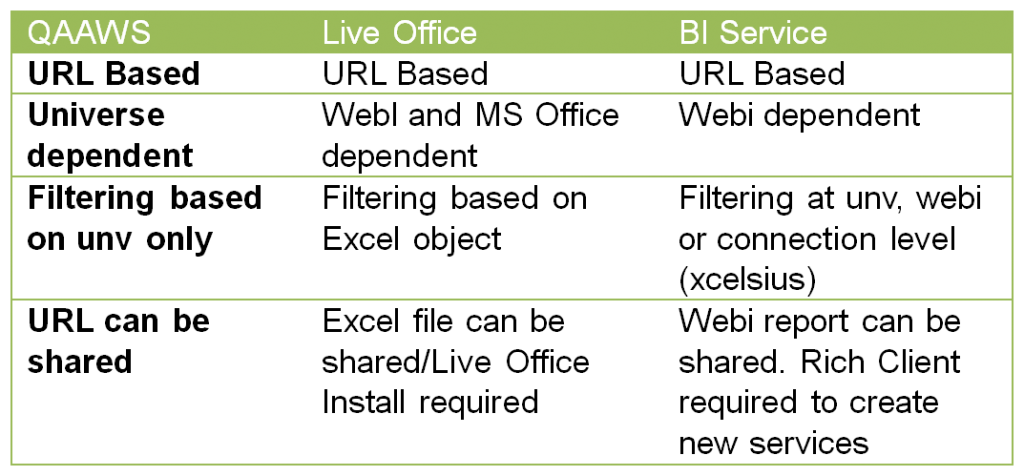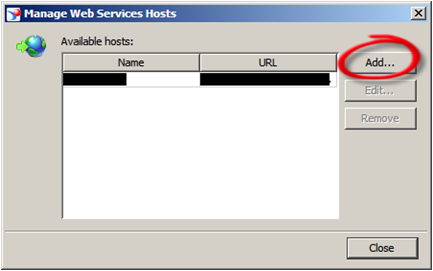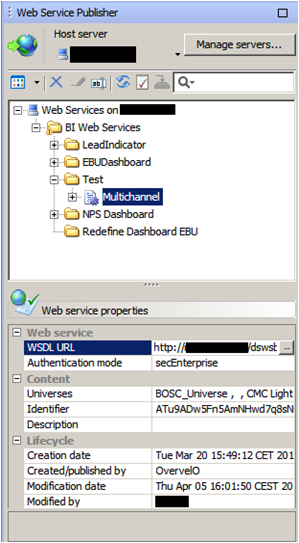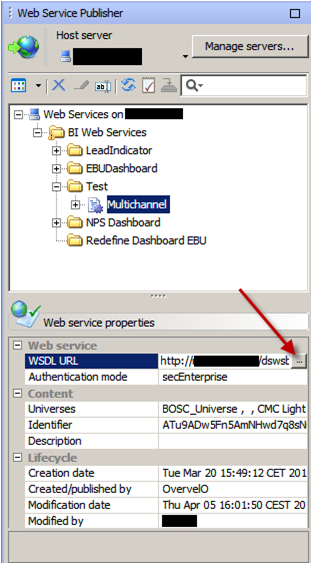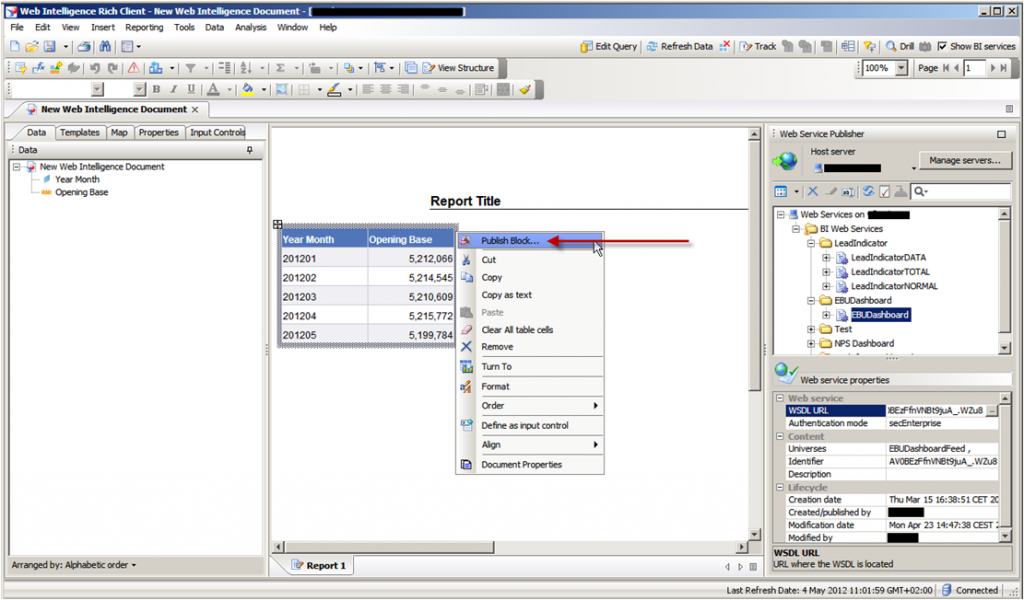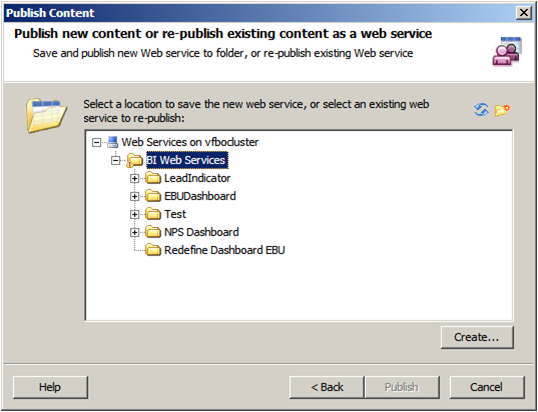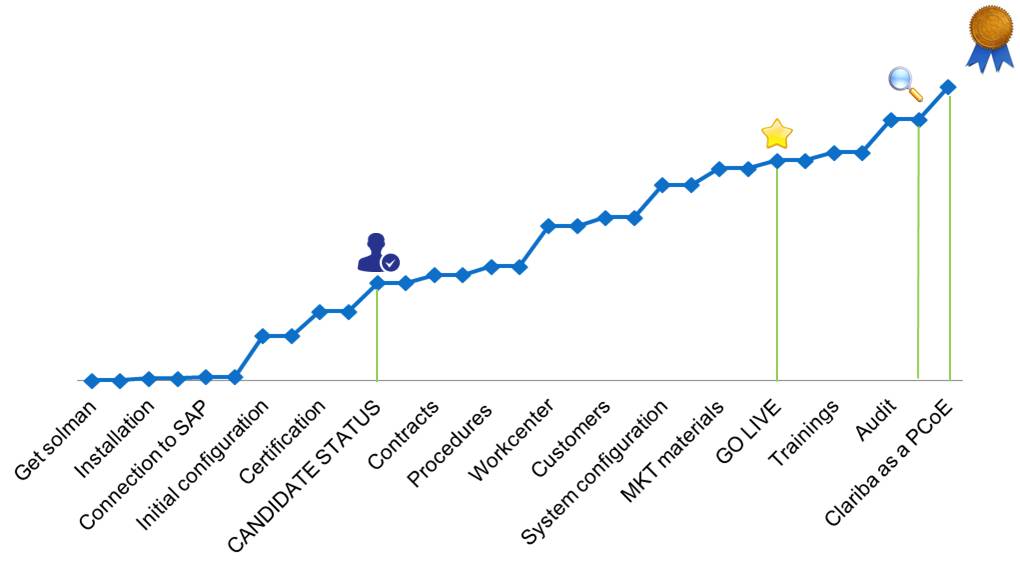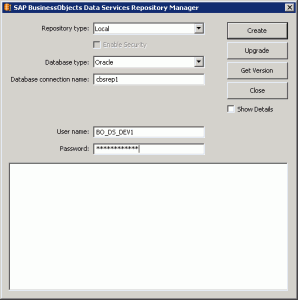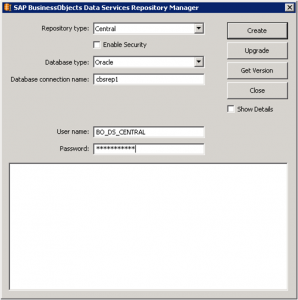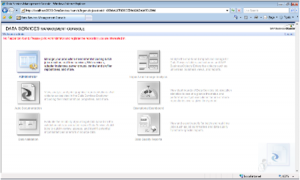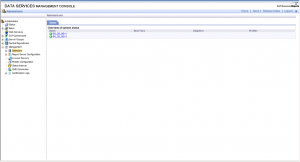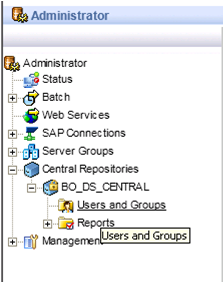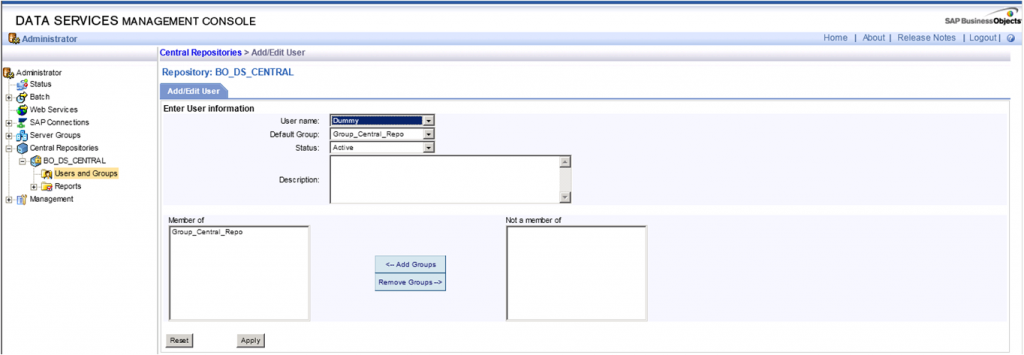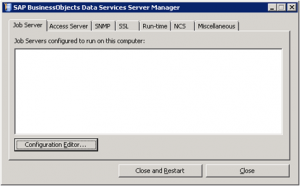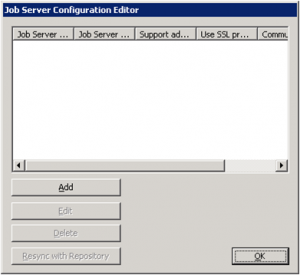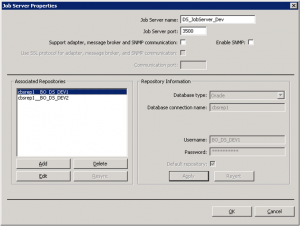SAP BI Services - Part 1
During the last couple of years I have been part of a team developing quite a few SAB BusinessObjects Dashboards (Xcelsius). In order to develop them, one of the key requirements is to have a consistent data source. Historically we have used all sorts of techniques that SAP BusinessObjects has made available, from QAAWS to Live Office. Each method has its pros and cons and there are situations on which using one over another makes sense.
On this article I will focus on the last method I have discovered: BI Services.
Comparing the three methods most frequently used, the following table shows their common characteristics as well as differences:
The main advantages I see on using the BI services method are:
- Using W as an aggregation engine
- Robust Query/Block organization
- Enterprise re-usability
- Filter capabilities at SAP BusinessObjects Dashboards (Xcelsius) connector level
- Additional Metadata
- Performance increase by using Webi servers engine/cache
Basic Requirements
Now let’s talk about how we can implement this solution in our Business environment.
As indicated above the BI Service is dependent on a WebI document. This means that it gets its data from a WebI report block. Also note that it is only possible to use this functionality if you have the WebI Rich Client application installed and you have enterprise permissions on the application. For our particular example we are using a client tools installation with version 3.1 SP 2.4.
Configuring the BI Service CMS Server
If you meet the two above requirements then let’s go ahead an open the WebI report that contains the block that will serve as the data source for our BI service.
Once the report is open you will see the on the top right of the WebI Rich client application. 
We need to mark the check box to display the BI Services panel. The following panel will appear on the right side of the application:
Now we need to configure the CMS server we will be accessing by clicking on the manage servers button.
Click on Add and enter the details corresponding to your SAP BusinessObjects system. The data input parameters are: CMS name and dsws URL (which should be something like this http://yourserver:port/dsws)
Once the server has been configured, select it from the list and click on the refresh button so all BI Web Services available are displayed.
A list of BI Web Services will appear if any exist in the system. The BI Web Services can be organized in folders and each BI Web Services can have 1 or more blocks of data. We will talk more about these organization structures later on this blog.
You can see the 3 levels of organization in the screenshot below:
In order to consume from one of the BI Services available you will need to use the WSDL url which is one of the properties that appear when you select the block you wish to consume from the list.
Click on the three dots button on the right so you can see the BI Service definition.
The BI service description should look similar to the screenshot below.
NOTE: If you can’t see a page similar to the one below, then the BI service URL is not accessible from the machine you are querying from and that might cause trouble later on.
Click on the wsdl link.
Creating a new BI Service
Select the block from the WebI report and right click on it. A context menu will appear with its first value being “Publish block”. Select this option.
In some cases the below warning might appear. If the WebI report you are using as a source is not published in the SAP BusinessObjects enterprise repository then you can’t create a new service.
This is the initial screen for the BI service publishing wizard:
You need to, define a name for the block. The block is the smallest piece of organization for the BI service and it is equivalent to the table you have selected as a data source.
The block can be part of an existing BI service or you can create a new one. Each BI Service can contain one or many blocks. Also the BI Service can be organized in folders. All of these selections are done at the following screen:
For publishing a block on an existing BI service just select the BI service and press the Publish button.
To create a new service, select the folder and click on the Create button below. To create a new folder click on the New Folder button on the upper right side.
So now that your BI service has been created it is time to start consuming it with SAP BusinessObjects Dashboards (Xcelsius).
In the next part of this blog we will talk about SAP BusinessObjects Dashboards (Xcelsius) connectivity to BI services and what we can do to manipulate our new data source.
If you have any questions or tips, leave a comment below.
Implementación de SAP Rapid Marts Xi 3.2: lecciones aprendidas
I would like to share with you two lessons learned about the implementation of SAP Rapid Marts XI 3.2, version for SAP Solutions. In our particular case the customer didn´t allow us make any modification to the out-of-the-box solution, and this must be taken into account when reading the article.
Lesson 1: Don´t be scared by the TSV_TNEW_PAGE_ALLOC_FAILED Error
If part of your implementation of SAP Rapid Marts includes General Ledger, Inventory or Cost Center you will probably have to perform a massive extraction of information from SAP ERP during your initial load. Most probably your customer will have been working with their ERP for quite some time, and you are likely to face the following error:
At this point, you will possibly start looking at configuration of SAP Data Services or you will start trying to tune the SAP ERP configuration in order to achieve the end-to-end execution. In general terms, you will have a headache trying to solve this problem and most likely none of the configurations will work…
The truth is out there… After many hours trying to tune configurations you will understand that the only solution is to modify the ABAP extraction itself… BAD NEWS: your customer does not allow you to do this because this means altering the out-of-the-box product. GOOD NEWS: the guys from SAP Support already tackled this problem and they published the following SAP Note 1446203 - Multiple Query Transforms in ABAP Data Flows, there they clearly explain that your conclusion is correct: this error is a memory allocation error on the SAP solutions server, it indicates that the SAP solutions server has run out of memory for the SAP Data Services generated ABAP program.
You will find an attachment in the SAP Note with some ATLs where they basically tune all the ABAP extractions of the SAP Rapid Marts XI 3.2 package, after applying this ATL to the out-of-the-box solution your extraction will work like a charm.
Lesson 2: How to improve performance of Delta Load for FINANCIAL_DOCUMENT_FACT
This lesson is useful to you if SAP Rapid Mart XI 3.2 General Ledger is part of your implementation.
After finishing the initial load of this SAP Rapid Mart you will start running the delta load. At this moment you may be shocked by the bad performance. Depending of your requirement this delta load can be something simply not affordable.
In basic terms this delta load tries to rebuild all the information of the current fiscal year. We ran an extensive performance analysis and the conclusion was clear: the logic for the processing of delta loads to the table FINANCIAL_DOCUMENT_FACT was causing serious performance issues to our environment.
Only one possible solution was in sight: introduce a new logic for the processing of delta loads to the table FINANCIAL_DOCUMENT_FACT. Breathe deeply because indeed this means to re-invent the SAP solution and this can clearly jeopardize your project.
We decided to come back with this topic to the SAP Support team looking for a “magical solution” and they got it! One more time there was a solution on the SAP Note 1557975 - Poor Performance of Delta Load for FINANCIAL_DOCUMENT_FACT.
The SAP note clearly defines a scenario like ours and provides an ATL file to tune the delta load for the FINANCIAL_DOCUMENT_FACT. Again, after applying the solution provided the delta load worked perfectly.
As conclusion, I would like to mention that after many years working with different support teams I´m impressed with the capability and escalation levels in the SAP Support team. Like many other support teams you may have to push to get a solution but I don´t know many other support teams that can escalate your request up to have a discussion with the director of development of a product or provide you with solutions that fit perfectly to your environments.
That´s all folks! I hope these two tips help you to speed up your SAP Rapid Marts implementations. If you have any doubts please leave a comment below.
Sugerencias para instalar SAP BusinessObjects BI4 en español
The Spanish installation of SAP BusinessObjects BI4 is said to frequently crash, and even when it does not, something is still wrong in the server side so SAP BusinessObjects installation administration console does not work as it should and certain formulas used in the front-end side malfunction. This article explains some tricks that can be applied when installing SAP BusinessObjects in Spanish so customers can successfully migrate to the new SAP BO BI4. Folders Security Configuration
Al configurar la seguridad de una carpeta en la consola de administración de SAP BusinessObjects, aparece un problema. Esto se puede reproducir fácilmente instalando el software en español, procediendo a entrar en CMC y empezar a configurar la seguridad. El error siguiente se puede ver al ingresar en carpetas Seguridad de carpeta de nivel superior:
"Se produjo un error de servidor durante la confirmación por lotes de seguridad: Error de solicitud 0 de tipo 44 con error de servidor: Error de Administrador de complementos: No se pudo localizar el complemento solicitado CrystalEnterprise.ScopeBatch en el servidor (FWB 00006)"
No hay otra solución en lugar de cambiar la configuración regional del servidor de español (España) a inglés (Reino Unido), entonces este problema se resuelve.
Uso de la fórmula UserResponse
Se produce un problema en WebIntelligence cuando la configuración regional preferida es el español y los usuarios actualizan los informes. Avisos: Un indicador numérico se interpreta como un texto con un formato científico incorrecto cuando se utiliza la fórmula = UserResponse ().
El problema se puede reproducir tomando un objeto del universo oficial de SAP "STS Sudeste Demo", recuperando un objeto con un prompt y aplicando la fórmula UserResponse () como se indica a continuación
En el ejemplo indicado anteriormente la fórmula UserResponse () debe ser evaluada como "201010" en lugar de "2.0101 e5". Esto puede causar problemas graves, ya que es un cambio vs. Versiones de software anteriores, ya que esto podría incluirse en muchas fórmulas y filtros, y podría causar un proyecto de migración con los informes que utilizan esta fórmula de uso frecuente para ser ampliado dramáticamente.
Una solución para esto es, por el momento, mantener el Entorno de visualización preferido en inglés para cada usuario que actualiza la información.
Así, resumiendo, los consejos propuestos para una instalación exitosa en español son:
- Mantenga su servidor con Configuración regional del servidor en inglés (Reino Unido)
- Configure los usuarios de BI LaunchPad para que mantengan la configuración regional preferida en inglés
- Mantenga el valor de la propiedad Locale del producto de BI LaunchPad en español (España)
Como resultado, los usuarios visualizarán todo el front-end en español sin errores.
Esta solución ha sido probada en el último 4.0 SP4 que incluye FeaturePack 3.
El beneficio de estas soluciones es proporcionar al mercado de clientes en español la posibilidad de comenzar a migrar a la nueva plataforma SAP BI4 con éxito y disfrutar del producto en español sin errores. Espero que esto ayude. Si desea dejar su comentario u opinión, por favor no dude en hacerlo a continuación.
Movilidad empresarial para la toma de decisiones conjunta y mayor productividad
Índices B-tree vs Bitmap: Consecuencias de la Indexación - Estrategia de Indexación para su Parte de Oracle Data Warehouse 2
On my previous blog post B-tree vs Bitmap indexes - Indexing Strategy for your Oracle Data Warehouse I answered two questions related to Indexing: Which kind of indexes can we use and on which tables/fields we should use them. As I promised at the end of my blog, now it´s time to answer the third question: what are the consequences of indexing in terms of time (query time, index build time) and storage?
Consecuencias en términos de tiempo y almacenamiento
Para abordar este tema utilizaré una base de datos de prueba con un esquema en estrella muy simplificado: 1 tabla de hechos de los saldos de las cuentas de Libro mayor y 4 dimensiones - la fecha, la cuenta, la moneda y la rama banco).
Para dar una idea del tamaño de la tabla, Fact_General_Ledger tiene 4,5 millones de filas, Dim_Date 14 000, Dim_Account 3 000, Dim_Branch y Dim_Currency menos de 200.
Supongamos aquí que los usuarios pueden consultar los datos con filtro en la fecha, código de sucursal, código de moneda, código de cuenta y los niveles 3 de la jerarquía de balance (DIM_ACCOUNT.LVLx_BS). Suponemos que las descripciones no se utilizan en los filtros, sino sólo en los resultados.
Aquí está la consulta que usaremos como referencia:
Seleccionar
d.date_date,
a.account_code,
b.branch_code,
c.currency_code,
f.balance_num
de fact_general_ledger f
unirse a dim_account a en f.account_key = a.account_key
join dim_date d en f.date_key = d.date_key
unirse a dim_branch b en f.branch_key = b.branch_key
unirse a dim_currency c en f.currency_key = c.currency_key
Dónde
A.lvl3_bs = 'Depósitos con bancos' y
D.date_date = to_date ('16/01/2012', 'DD / MM / YYYY') y
b.branch_code = 1 y
C.currency_code = 'QAR' - Vivo en Qatar ;-)
Entonces, ¿cuáles son los resultados en términos de tiempo y almacenamiento?
Algunas de las conclusiones que podemos extraer de esta tabla son:
Using indexes pays off: queries are really faster (about 100 times), whatever the chosen index type is.
En cuanto al tiempo de consulta, el tipo de índice no parece importar realmente para las tablas que no son tan grandes. Probablemente cambiaría para una tabla de hechos con 10 mil millones de filas. No obstante, parece existir una ventaja para los índices de mapa de bits y, especialmente, para los índices de combinación de mapa de bits (consulte la columna de costes del plan de explicación).
El almacenamiento es claramente a favor de los índices de combinación de mapa de bits y mapa de bits
El tiempo de construcción del índice es claramente a favor de b-tree. No he probado el tiempo de actualización del índice, pero la teoría dice que es mucho más rápido para los índices b-tree también.
Ok, estoy convencido de usar índices. ¿Cómo puedo crear / mantener una?
La sintaxis para crear índices b-tree y bitmap es similar:
Crear índice de mapa de bits Index_Name ON Nombre de tabla (FieldName)
En el caso de los índices b-tree, simplemente quite la palabra "Bitmap" de la consulta anterior.
La sintaxis para los índices de combinación de mapa de bits es más larga pero sigue siendo fácil de entender:
Crear índice de mapa de bits ACCOUNT_CODE_BJ
on fact_general_ledger (dim_account.account_code)
de fact_general_ledger, dim_account
donde fact_general_ledger.account_key = dim_account.account_key
Tenga en cuenta que durante su ETL, es mejor dejar / deshabilitar sus índices de combinación de mapa de bits / mapa de bits y volver a crearlos / reconstruirlos después, en lugar de actualizarlos. Se supone que es más rápido (sin embargo no he hecho ninguna prueba).
La diferencia entre drop / re-create y disable / rebuild es que cuando se deshabilita un índice, se mantiene la definición. Así que necesitas una sola línea para reconstruirla en lugar de muchas líneas para la creación completa. Sin embargo, los tiempos de generación del índice serán similares.
Para eliminar un índice: "drop index INDEX_NAME"
Para deshabilitar un índice: "alter index INDEX_NAME inutilizable"
Para reconstruir un índice: "alter index INDEX_NAME rebuild"
Conclusión
The conclusion is clear: USE INDEXES! When properly used, they can really boost query response times. Think about using them in your ETL as well: making lookups can be much faster with indexes.
Si desea ir más lejos, sólo puedo recomendarle que lea la Guía de almacenamiento de datos de Oracle. Para conseguirlo, sólo busque en Internet (y no olvide especificar la versión de su base de datos - 10.2, 11.1, 11.2, etc.). Es un documento bastante interesante y completo.
B-rbol vs índices de mapa de bits - Estrategia de indexación para su Parte de Oracle Data Warehouse 1
Some time ago we’ve seen how to create and maintain Oracle materialized views in order to improve query performance. But while materialized views are a valuable part of our toolbox, they definitely shouldn’t be our first attempt at improving a query performance. In this post we’re going to talk about something you’ve already heard about and used, but we will take it to the next level: indexes.
¿Por qué utilizar índices? Porque sin ellos usted tiene que realizar una lectura completa en cada tabla. Basta pensar en una guía telefónica: está indexado por su nombre, así que si te pido que encuentres todos los números de teléfono de personas cuyo nombre es Larrouturou, puedes hacerlo en menos de un minuto. Sin embargo, si te pido que encuentres a todas las personas que tienen un número de teléfono que comienza con 66903, no tendrás más remedio que leer el directorio telefónico completo. Espero que no tengas nada más planeado para los próximos dos meses o así.
Lo mismo ocurre con las tablas de la base de datos: si buscas algo en una tabla de hechos de filas multimillonarias no indexadas, la consulta correspondiente tomará mucho tiempo (y el usuario final típico no quiere sentarse 5 minutos Delante de su computadora esperando un informe). Si utilizó índices, podría haber encontrado el resultado en menos de 5 (o 1, o 0.1) segundos.
Voy a responder a las siguientes tres preguntas: ¿Qué tipo de índices podemos utilizar? ¿En qué tablas / campos los utilizaremos? ¿Cuáles son las consecuencias en términos de tiempo (tiempo de consulta, tiempo de construcción de índice) y almacenamiento?
¿Qué tipo de índices podemos usar?
Oracle tiene muchos tipos de índices disponibles (IOT, Cluster, etc.), pero sólo hablaré de los tres principales utilizados en data warehouses.
Índices de los árboles B
B-tree indexes are mostly used on unique or near-unique columns. They keep a good performance during update/insert/delete operations, and therefore are well adapted to operational environments using third normal form schemas. But they are less frequent in data warehouses, where columns often have a low cardinality. Note that B-tree is the default index type – if you have created an index without specifying anything, then it’s a B-tree index.
Índices de mapa de bits
Los índices de mapa de bits se utilizan mejor en columnas de cardinalidad baja y, a continuación, pueden ofrecer ahorros significativos en términos de espacio, así como un rendimiento de consulta muy bueno. Son más eficaces en las consultas que contienen varias condiciones en la cláusula WHERE.
Tenga en cuenta que los índices de mapa de bits son particularmente lentos para actualizar.
Índices de unión de mapa de bits
Un índice de unión de mapa de bits es un índice de mapa de bits para la unión entre tablas (2 o más). Almacena el resultado de las uniones, y por lo tanto puede ofrecer grandes prestaciones en las combinaciones predefinidas. Está especialmente adaptado a los entornos de esquema en estrella.
¿En qué tablas / campos usaremos qué índices?
¿Podemos poner índices en todas partes? No. Los índices vienen con costos (tiempo de creación, tiempo de actualización, almacenamiento) y deben crearse sólo cuando sea necesario.
Recuerde también que el objetivo es evitar lecturas completas de tabla - si la tabla es pequeña, entonces el optimizador de Oracle decidirá leer toda la tabla de todos modos. Por lo tanto, no es necesario crear índices en tablas pequeñas. Ya puedo oírte preguntar: "¿Qué es una mesa pequeña?" Una mesa de un millón de filas definitivamente no es pequeña. Una tabla 50 -row definitivamente es pequeña. ¿Una mesa de 4532 -crow? No estoy seguro. Vamos a ejecutar algunas pruebas y averiguar.
Antes de decidir sobre dónde usaremos los índices, analicemos nuestro esquema típico en estrella con una tabla de hechos y varias dimensiones.
Comencemos por ver la columna de cardinalidad. Tenemos un caso de unicidad: las claves primarias de las tablas de dimensiones. En ese caso, puede que desee utilizar un índice de árbol b para reforzar la unicidad. Sin embargo, si considera que el ETL que prepara las tablas de dimensiones ya se aseguró de que las claves de dimensión sean únicas, puede saltarse este índice (es todo acerca de su ETL y cuánto confía en él).
Entonces tenemos un caso de alta cardinalidad: las medidas en la tabla de hechos. Una de las principales preguntas que se deben hacer al decidir si aplicar o no un índice es: "¿Alguien va a buscar un valor específico en esta columna?" En este ejemplo he desarrollado asumo que nadie está interesado en saber qué cuenta Tiene un valor de 43453.12. Así que no hay necesidad de un índice aquí.
¿Qué pasa con los atributos de la dimensión? La respuesta es, depende". ¿Los usuarios van a hacer búsquedas en la columna X? Entonces usted quiere un índice. Elegirá el tipo basado en la cardinalidad: índice de mapa de bits para cardinalidad baja, árbol b para cardinalidad alta.
En cuanto a las claves de dimensión en la tabla de hechos, ¿va alguien a realizar una búsqueda en ellos? No directamente (sin filtros por las teclas de dimensión!), Pero indirectamente, sí. Cada consulta que une una tabla de hechos con una o más tablas de dimensiones busca claves de dimensión específicas en la tabla de hechos. Tenemos dos opciones para manejar esto: poner una clave de mapa de bits en cada columna o usar claves de combinación de mapa de bits.
Más consultas...
¿Son efectivos los índices? ¿Y qué hay del almacenamiento necesario? ¿Y el tiempo necesario para construir / refrescar los índices?
Vamos a hablar de eso la próxima semana en la segunda parte de mi puesto.
Clariba Obtiene el Centro de Expertos de SAP Partner Certification
La auditoría de servicio y soporte de SAP confirma que Clariba puede brindar soporte a sus clientes de acuerdo con los estándares técnicos y organizativos actuales de SAP, recibiendo así la Certificación del Centro de Expertos (PCoE) de Partner.
El 30 de mayo, los empleados de Clariba recibieron la sorprendente noticia: habían pasado la auditoría final y SAP estaba otorgando a Clariba Support Center la certificación PCoE.
Esta fue la línea final de un proceso que comenzó en 2011 y requirió mucho esfuerzo por parte de los miembros del Centro de Soporte de Clariba, desde la instalación de SAP Solution Manager (el sistema utilizado para proporcionar soporte), hasta la certificación del personal del centro de soporte, creando todos los materiales de marketing y finalmente someterse a una auditoría de 6 horas para evaluar si todos los requisitos estaban en su lugar.
“It’s been a very long and complex process, since it was our first experience with SAP native applications. Installing and configuring SAP Solution Manager has been a big challenge, but now it allows us to provide full SAP Enterprise Support to our customers. We use SAP Solution Manager to monitor our customer installations remotely as well as connect them with the resourceful SAP back-end infrastructure. In addition, SAP Solution Manager provides our support customers with a Service Desk available 24x7, to create and track their incidents and to ensure a fast and efficient service for very critical issues at any time” says Carolina Delgado, support manager at Clariba.
La certificación de Partner Center of Expertise (PCoE) afirma que los procedimientos definidos, las pautas y los miembros certificados del equipo de soporte están disponibles para proporcionar servicios de soporte calificados, oportunos y confiables para las soluciones SAP BI.
“Como requisito para lograr la certificación PCoE, todos nuestros consultores de soporte tienen el Asociado de Soporte - Gestión de Incidentes en la certificación SAP BusinessObjects y como un compromiso de alta calidad y profesionalismo, requerimos que todos nuestros consultores estén certificados en el paquete SAP BusinessObjects. Ambas acreditaciones aseguran que nuestro personal de soporte tenga el conocimiento requerido para abordar y resolver eficientemente cualquier problema técnico que pueda surgir. Además, pueden aprovechar una amplia base de conocimiento que proviene de muchos años de experiencia en la instalación y desarrollo de SAP BusinessObjects, así como en una interacción continua con la comunidad de SAP ", menciona Carolina.
Con esto en su lugar, el Centro de Soporte Clariba puede ofrecer soporte VAR entregado a sus clientes, proporcionando el conocimiento y las herramientas de soporte para las licencias de SAP BusinessObjects a través de un único punto de contacto ─ un socio familiar, ágil y disponible, asegurando que un punto definido y conocido de El contacto siempre está disponible para los clientes en caso de que surjan problemas en sus sistemas SAP BusinessObjects.
Carolina señala que el beneficio clave es la proximidad con los clientes y sus entornos. “En la mayoría de los casos, mantenemos sistemas de BI implementados por Clariba. Esto nos da la ventaja de comprender mejor el entorno del cliente, para que podamos brindar un servicio más preciso y personalizado ".
Como SAP Partner Center of Expertise (PCoE), Clariba puede ofrecer a sus clientes
un personal totalmente calificado de acuerdo con los estándares de calidad de SAP;
real-life SAP BusinessObjects implementation, training and support experience;
a relationship with the client organization built on trust and past successes;detailed knowledge of the organization’s history, systems and business processes when the BI system has been deployed by Clariba;
personal capacitado para la resolución rápida de problemas y enfocado en la satisfacción del cliente;
Muy sólida cooperación y relación con expertos de SAP en todo el mundo y una plataforma de soporte integrada que garantiza la mejor calidad de servicio.
For more information on Clariba´s Support Center offerings visit http://www.clariba.com/bi-services/support.php
Working with Data Services 4.0 repositories
On my previous blog, “Instalación de servicios de datos 4.0 en un entorno distribuido” I mentioned there was an important step to be carried out after installing data services in a distributed environment: configure the repositories. As promised, I will now walk you through this process. Data Services 4.0 can now be managed using the BI Platform for security and administration. This puts all of the security for Data Services in one place, instead of being fragmented across the various repositories. It means that Data Services repositories are managed through the Central Management Console. With Data Services 4.0 you will be able to set rights on individual repositories just like you would with any other object in the SAP BusinessObjects platform. What is particularly interesting about managing Data Services security using CMC is that you can assign rights to the different Data services repositories.
Ahora puede iniciar sesión en el Diseñador de servicios de datos o la Consola de administración con su ID de usuario de SAP BusinessObjects en lugar de tener que ingresar las credenciales de la base de datos. Una vez que inicie sesión en Designer, se le presentará una lista simple de repositorios de Servicios de datos para elegir.
I advice anyone who is beginning to experiment with Data Services to use the repositories properly from the start! At first it might seem really tough, but it will prove to be very useful. SAP BusinessObjects Data Services solutions are built over 3 different types of meta-data repositories called central, local y profile repository. In this article I am going to show you how to configure and use the central and the local repository.
The local repositories can be used by the individual ETL developers to store the meta-data pertaining to their ETL codes, the central repository is used to "check in" the individual work and maintain a single version of truth for the configuration items. This “check in” action allows you to have a version history from which you can recover older versions in case you need it.
Now lets see how to configure the local and central repository in order to finish the Data Services’ installation.
So, let’s start with the local repository. First of all, go to Start Menu and start Data Service Repository Manager Tool.
Choose “Local” in the repository type combo box. Then, enter the information to configure the meta-data of the Local Repository.
For the central repository chose central as repository type and then enter the information to configure the meta-data of the Central Repository. Check the check box “Enable Security”.
After filling in the information, press Get Version in order to know if there is connection with the data base. If there is connection established, press Create.
Once you have created the repositories you have to add them into the Data Service Management Console. To do that log in DS Management Console. You will see the screen below.
This error is telling you that you have to register the repositories. The next steps is to click on Administrator to register the repositories.
On the left pane, click on Management list item. Then click on Repositorios and you will see that there are no repositories registered on it. In order to register them, click the Add button to register a repository in management console.
Finally, write the repository information and click Prueba to check the connection. If the connection is successful, click apply and then you will be able to see the following image which contains the repositories that you have created. DO NOT forget to register the central repository.
Después de eso, el siguiente paso lógico es intentar acceder a los Servicios de datos utilizando uno de los repositorios locales. Una vez dentro del Diseñador, active el repositorio central que ha creado. Los servicios de datos mostrarán un error que le indicará que no tiene suficientes privilegios para activarlo.
Para poder activar el repositorio central, debe asignar la seguridad. Para hacerlo, vaya a la Consola de administración de servicios de datos. En el panel izquierdo, vaya a "Repositorio central" y haga clic en "usuarios y grupos".
Una vez que esté dentro de Usuarios y Grupos, haga clic en "Agregar" y cree un nuevo grupo. Cuando se crea el grupo, selecciónelo y haga clic en la pestaña "usuarios" que se encuentra a la derecha de la pestaña del grupo (vea la imagen a continuación).
Ahora puede agregar los nombres de los usuarios que pueden activar y utilizar el repositorio central en la herramienta de diseño. Como puede ver en la imagen a continuación, el único usuario que agregó en el ejemplo es el "Administrador".
Now the last task is to configure the Job Server to finish the configuration.
As always, go to Start Menu and start Server Manager Tool. Once you start the Server Manager the window below appears.
Press Editor de configuración a new window will be opened. Press Add and you will have a new job server.
Keep the default port and choose a name or keep the default one for the new Job server. Then press Add to associate the repositories with the job server created.
Once you press “Add” you will be able to add information in the right part of the window “Repository Information”. Add the information of the local repositories that you have created in the previous steps.
At the end you will see two local repositories associated.
With this step you have already finished the repository configuration and are now able to manage the security from the CMC and use the regular BO users to log into the designer and add security to the Data Services repositories like you do with every BusinessObjects application.
If you have any questions or other tips, share it with us by leaving a comment below.
SMEs Run SAP – Myth 4: SAP is not Agile Enough
The 4th and last post on our SAP Myth busting series, this article intends to show how SMEs can meet their need for speed with SAP.A bigger business is a better business. It’s a common assumption, but it’s not strictly true. Small to medium-sized businesses (SMEs) have a number of advantages over their larger counterparts. Their size is often their strength – it makes them agile. In fact, most SMEs we speak to pride themselves on this. They can respond faster to changes in the market and take advantage of new insight and opportunities faster than larger organizations.
To capitalize on their agility, SMEs need systems that play to this strength. Unfortunately, some SMEs get bogged down by manual processes. They rely on off-the-shelf software that doesn’t quite meet their needs and depend on spreadsheets for their business intelligence. All these things slow their businesses down and mean they’re more likely to miss opportunities. In this environment, executives often resort to making important decisions on a gut feeling rather than the latest data.
That’s why it’s always a surprise to hear an SME wondering if SAP software will slow them down. Maybe the perception is that SAP software is only for enterprise organizations, but this couldn’t be further from the truth. It’s another business myth. Rather than slow these businesses down, SAP helps them become more agile and able to capitalize on opportunities faster.
Clariba has helped companies streamline their internal reporting processes, arriving in a particular case to an 80% reduction in the time it took to produce monthly internal reports. We also allow organizations reduce reliance on manual data, improving reporting accuracy, reducing errors and promoting decisions based on solid information rather than just gut feeling.
More importantly, we have the expertise to speed up the implementation process, so that your company can start enjoying the benefits of an SAP BusinessObjects Business Intelligence solutions in a short time frame. Furthermore, if you are worried about the impact the change will have over your employees, Clariba has best-in-class trainers, with years of experience, ready to help your employees make the transition from a spreadsheet based organization to the innovative and integrated information hub they will soon benefit from.
Contact us to discover how much SAP and Clariba can deliver to your company.



